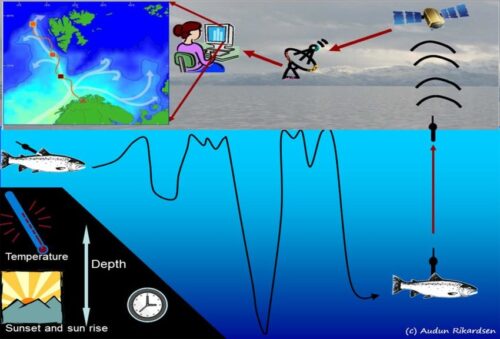
MOREHEAD CITY – As North Carolina’s official ‘State Saltwater Fish,’ the Red Drum is not only a popular target for anglers but also a species of significant economic importance. While annual data supports these claims, several key questions remain unanswered: Where do Red Drum spawn? How far do they travel? How often do they pass through the ocean inlets, and do they head north to Virginia or make their way beyond South Carolina?
To address these questions and more, the NC Department of Environmental Quality’s Division of Marine Fisheries has partnered with the NC Marine & Estuary Foundation to launch an innovative satellite tagging study over the next two years. This initiative aims to develop a more comprehensive understanding of stock structure, spawning migrations, and habitat preferences of adult Red Drum.
“This study represents a significant advancement in Red Drum research for North Carolina,” remarked Chad Thomas, Executive Director of the NC Marine & Estuary Foundation. “We are proud to financially support this vital research, which will provide invaluable data for the Division for years to come.”
In this study, mature Red Drum (those over 32 inches in length) will be equipped with SeaTag-GEO pop-up satellite tags. These novel, solar-powered tags measure magnetics, light, and temperature. Daily data is transmitted from each fish to the ARGOS satellite and then sent to the computer software for positioning estimates. The data is collected until the programmed “pop-off” date, at which time the tag releases from the fish and floats to the surface. Once the tag surfaces, an accurate final location is captured, along with a range of temporal and spatial data from the fish. Additional opportunistic sampling occurs whenever the tag is exposed and the fish surfaces. Each tag costs approximately $1,300, plus an additional $65 monthly fee for data storage and transmission to and from the ARGOS satellite.
“North Carolina provides essential Red Drum stock monitoring data not only in the NC Division of Marine Fisheries annual fishery management plans but also for the whole of the Northern Stock in Atlantic States Marine Fisheries Commission stock assessments,” explained Cara Kowalchyk, Red Drum Project Lead Biologist for the Division of Marine Fisheries. “This project addresses a high-priority research need for estimating adult population movement rates.”
The first year of the study is divided into two phases. In August and September, the Division of Marine Fisheries will tag 20 mature Red Drum in the Pamlico Sound. These fish will be collected during the Division’s annual longline Red Drum survey, and the tags will be programmed to pop off after intervals of up to three months. In phase two during September and October, NC Division of Marine Fisheries staff will tag an additional group of 14 mature Red Drum in the Pamlico Sound using fish collected by local recreational fishing guides. The tags in this second phase will be programmed to pop off after periods of up to twelve months. This will provide more large-scale tracking of Red Drum movements along the North Carolina coastline to identify inshore spawning locations and subsequent offshore migration.
The second year of the study will use analyses of year one data to inform and further expand the project. During this phase, two groups of mature Red Drum will be tagged in the open ocean: one group north of Cape Hatteras and another group south of Cape Hatteras.
“We commend the Division for their innovative research approach and eagerly anticipate sharing the data collected,” Thomas said. “This study not only deepens our understanding of Red Drum but also aims to boost public engagement through migration pattern updates and targeted outreach efforts.”














































